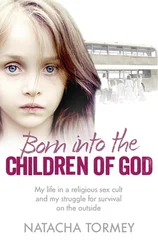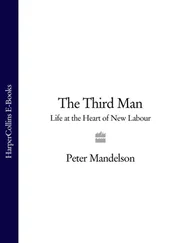Outer Azua was a dire wasteland indeed. My moms, a contemporary of Belicia, spent a record-breaking fifteen years in Outer Azua. And while her childhood was far nicer than Beli’s she nevertheless reports that in the early fifties these precincts were full of smoke, inbreeding, intestinal worms, twelve-year-old brides, and full on whippings. Families were Glasgow-ghetto huge because, she claims, there was nothing to do after dark and because infant mortality rates were so extreme and calamities so vast you needed a serious supply of reinforcements if you expected your line to continue. A child who hadn’t escaped a close brush with Death was looked at askance. (My mom survived a rheumatic fever that killed her favorite cousin; by the time her own fever broke and she regained consciousness, my abuelos had already bought the coffin they expected to bury her in.)
For two nights she slept poorly, had to medicate herself with marijuana, and finally, after dreaming of her dead husband and as much to settle her own conscience as anything, La Inca asked her neighbor and number one dough-kneader, Carlos Moya (the man who had once kneaded her dough, before running off and getting married) to drive her to where this girl was supposed to live. If she is my cousin’s daughter I will know her just by looking at her, she announced. Twenty-four hours later La Inca returned with an impossibly tall, impossibly skinny half-dead Belicia in tow, La Inca’s mind firmly and permanently set against both campos and their inhabitants. Not only had these savages burned the girl, they proceeded to punish her further by locking her in a chicken coop at night! At first they hadn’t wanted to bring her out. She can’t be your family, she’s a prieta. But La Inca insisted, used the Voice on them, and when the girl emerged from the coop, unable to unbend her body because of the burn, La Inca had stared into her wild furious eyes and seen Abelard and Socorro staring back at her. Forget the black skin—it was her. The Third and Final Daughter. Thought lost, now found.
I am your real family, La Inca said forcefully. I am here to save you.
And so, in a heartbeat, by a whisper, were two lives irrevocably changed. La Inca installed Beli in the spare room in her house where her husband had once taken his naps and worked on his carvings. Filed the paperwork to give the girl an identity, called in the doctors. The girl’s burns were unbelievably savage. (One hundred and ten hit points minimum.) A monster glove of festering ruination extending from the back of her neck to the base of her spine. A bomb crater, a world-scar like those of a hibakusha. As soon as she could wear real clothes again, La Inca dressed the girl and had her first real photo taken out in front of the house.
Here she is: Hypatia Belicia Cabral, the Third and Final Daughter. Suspicious, angry, scowling, uncommunicative, a wounded hungering campesina, but with an expression and posture that shouted in bold, gothic letters: DEFIANT.
Darkskinned but clearly her family’s daughter. Of this there was no doubt. Already taller than Jackie in her prime. Her eyes exactly the same color as those of the father she knew nothing about.
Of those nine years (and of the Burning) Beli did not speak. It seems that as soon as her days in Outer Azua were over, as soon as she reached Baní, that entire chapter of her life got slopped into those containers in which governments store nuclear waste, triple-sealed by industrial lasers and deposited in the dark, uncharted trenches of her soul. It says a lot about Beli that for forty years she never leaked word one about that period of her life: not to her madre, not to her friends, not to her lovers, not to the Gangster, not to her husband. And certainly not to her beloved children, Lola and Oscar. Forty years . What little anyone knows about Beli’s Azua days comes exclusively from what La Inca heard the day she rescued Beli from her so-called parents. Even today La Inca rarely saying anything more than Casi la acabaron .
In fact, I believe that, barring a couple of key moments, Beli never thought about that life again. Embraced the amnesia that was so common throughout the Islands, five parts denial, five parts negative hallucination. Embraced the power of the Untilles. And from it forged herself anew.
But enough. What matters is that in Baní, in La Inca’s house, Belicia Cabral found Sanctuary. And in La Inca, the mother she never had. Taught the girl to read, write, dress, eat, behave normally. La Inca a finishing school on fast-forward; for here was a woman with a civilizing mission , a woman driven by her own colossal feelings of guilt, betrayal, and failure. And Beli, despite all that she’d endured (or perhaps because of it), turned out to be a most apt pupil. Took to La Inca’s civilizing procedures like a mongoose to chicken. By the end of Sanctuary’s first year, Beli’s rough lines had been kneaded out; she might have cursed more, had more of a temper, her movements more aggressive and unrestrained, had the merciless eyes of a falcon, but she had the posture and speech (and arrogance) of una muchacha respetable. And when she wore long sleeves the scar was only visible on her neck (the edge of a larger ruination certainly, but greatly reduced by the cut of the cloth).This was the girl who would travel to the U.S. in 1962, whom Oscar and Lola would never know. La Inca the only one to have seen Beli at her beginnings, when she slept fully dressed and screamed in the middle of the night, who saw her before she constructed a better self one with Victorian table manners and a disgust of filth and poor people.
Theirs, as you might imagine, was an odd relationship. La Inca never sought to discuss Beli’s time in Azua, would never refer to it, or to the Burning. She pretended it didn’t exist (the same way she pretended that the poor slobs in her barrio didn’t exist when they, in fact, were overrunning the place). Even when she greased the girl’s back, every morning and every night, La Inca only said, Síentese aquí, señorita. It was a silence, a lack of probing, that Beli found most agreeable. (If only the waves of feeling that would occasionally lap her back could be so easily forgotten.) Instead of talking about the Burning, or Outer Azua, La Inca talked to Beli about her lost, forgotten past, about her father, the famous doctor, about her mother, the beautiful nurse, about her sisters Jackie and Astrid, and about that marvelous castle in the Cibao: Casa Hatüey.
They may never have become best friends—Beli too furious, La Inca too correct—but La Inca did give Beli the greatest of gifts, which she would appreciate only much later; one night La Inca produced an old newspaper, pointed to a photograph: This, she said, is your father and your mother. This, she said, is who you are.
The day they opened their clinic: so young, both of them looking so serious.
For Beli those months truly were her one and only Sanctuary, a world of safety she never thought possible. She had clothes, she had food, she had time, and La Inca never ever yelled at her. Not for nothing, and didn’t let anybody else yell at her either. Before La Inca enrolled her in Colegio EI Redentor with the richies, Beli attended the dusty, fly-infested public school with children three years younger than her, made no friends (she couldn’t have imagined it any other way), and for the first time in her life began to remember her dreams. It was a luxury she’d never dared indulge in, and in the beginning they seemed as powerful as storms. She had the whole variety, from flying to being lost, and even dreamt about the Burning, how her ‘father’s’ face had turned blank at the moment he picked up the skillet. In her dreams she was never scared. Would only shake her head. You’re gone, she said. No more.
Читать дальше
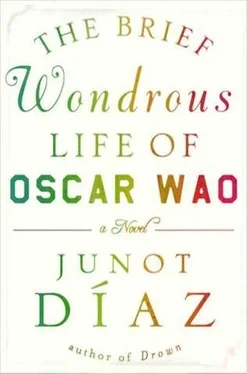
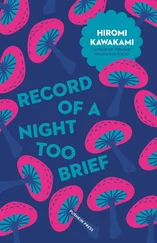
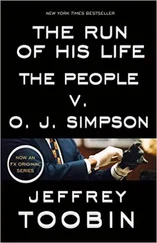




![О Генри - Недолгий триумф Тильди [The Brief Debut of Tildy]](/books/415353/o-genri-nedolgij-triumf-tildi-the-brief-debut-of-thumb.webp)


